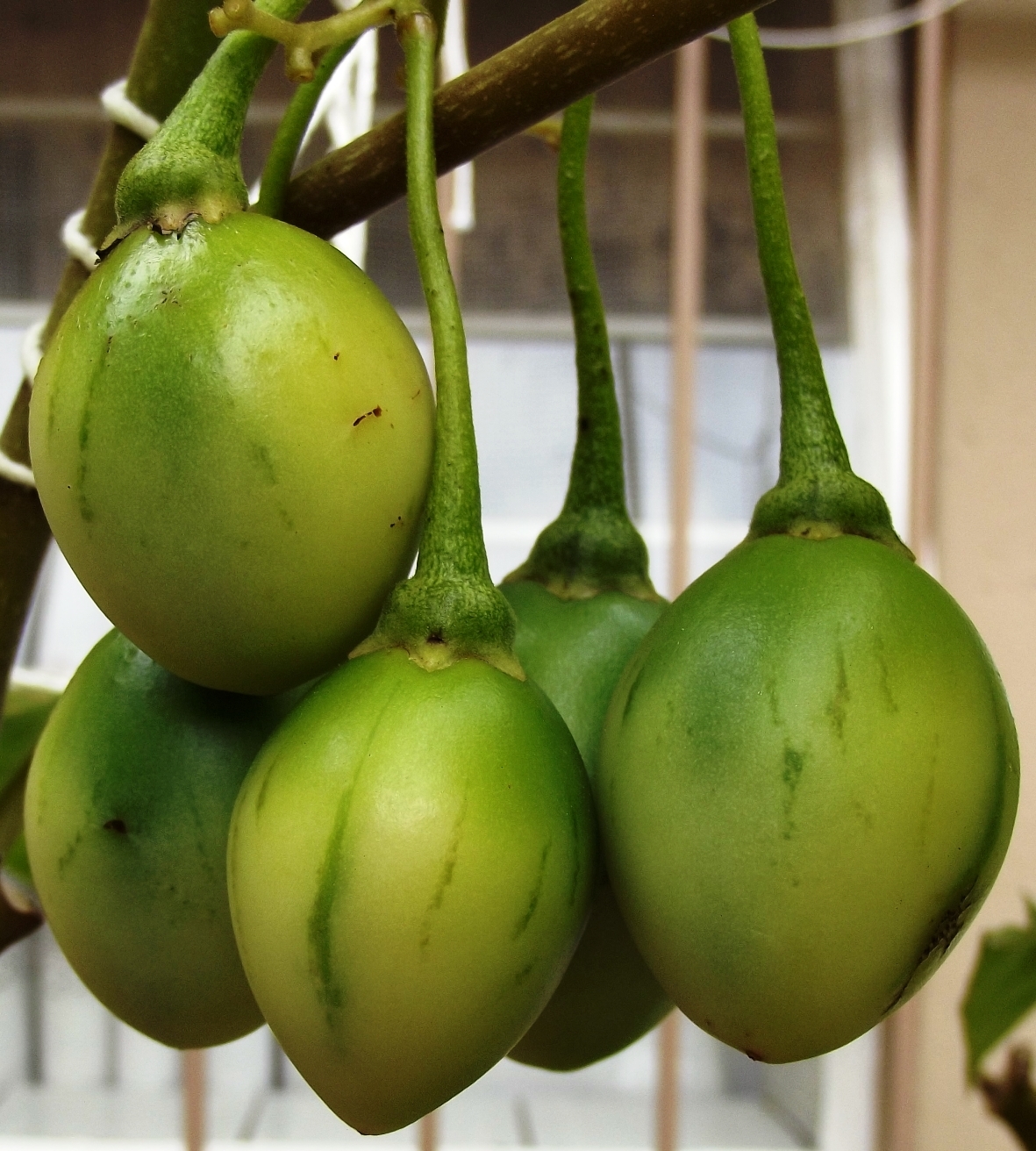Can You Eat Green Tamarillo? A Guide to This Unique Fruit

Tamarillo, also known as the “tree tomato,” isn’t your average piece of fruit. This colorful beauty brings a burst of tanginess and flavor that lands somewhere between a tomato, a guava, and a passion fruit. But when it comes to its unripe green variety, people often wonder: can you eat it?
Let’s dive deep into the world of tamarillos, discover the taste and texture differences between colors, and answer the big question about green tamarillo!
The Colorful Spectrum of Tamarillos: What Each Color Means for Flavor

Tamarillos come in a vibrant array of colors, each with a unique flavor profile:
| Color | Taste Profile | Common Uses |
| Yellow/Orange | Sweet, mild, and slightly tangy | Perfect for desserts and salads |
| Red/Purple | Tart, bold, and slightly acidic | Great for sauces and savory dishes |
| Green | Extremely tart, almost sour | Often cooked or used as a vegetable substitute |
The yellow and orange varieties tend to be sweeter on the inside, with an orange flesh that melts in your mouth with a gentle tang. Red and purple tamarillos bring a bolder, tarter experience, their dark flesh contrasting beautifully with their vibrant skins. But green tamarillos?
Brace yourself—they’re as tart as they come. With a punchy flavor that’s almost sour, they’re not for the faint of heart. While you can technically eat green tamarillo raw, it’s best enjoyed when cooked.
Are Tamarillos Edible? The Truth About This Unique Fruit
Yes, you can absolutely eat tamarillos, but not every part is tasty. The flesh of the tamarillo has a bold, almost tropical flavor with a mix of tang and sweetness. Some say it’s like a kiwi crossed with a tomato, with a hint of passionfruit thrown in. The seeds are edible and add a slight crunch, but the skin? That’s a no-go. Tamarillo skin and the flesh right next to it taste bitter and unappetizing, so it’s best to peel it off before you dig in.
Pro Tip: To make peeling easier, blanch the tamarillo by dipping it in hot water for a few seconds, then in cold water. The skin should slip right off!
Can You Eat Green Tamarillo Raw?
You might be tempted to take a bite of that vibrant green tamarillo, but be prepared for a shock to the taste buds. Green tamarillos pack a tartness that borders on sour, which can be overwhelming if eaten raw. They’re often used more like a vegetable in cooking rather than enjoyed straight from the fruit bowl.
When cooked, however, green tamarillos take on a softer, less intense flavor that can add a unique twist to stews, sauces, or chutneys.
How to Tell If a Tamarillo is Ripe
Unlike some fruits, tamarillos can ripen off the vine. Here’s a quick guide to help you determine if your tamarillo is ready to eat:
- Color Check: Unripe tamarillos are usually yellow or greenish. As they ripen, they’ll turn red or deep brownish-red, depending on the variety.
- Texture Test: Give it a gentle squeeze. A ripe tamarillo will have a slight give to it, indicating that it’s juicy and ready.
- Temperature Trick: If you’ve got an unripe tamarillo, just leave it at room temperature. It should ripen in a few days.
The Flavor of Tamarillos: What Does This Fruit Taste Like?
Imagine a sweet tomato with a zing of citrus, a sharp tang, and just a hint of bitterness—that’s the tamarillo experience. The texture is quite similar to a tomato, complete with small, edible seeds. Depending on the color, you might get a more mellow, sweet bite (yellow or orange tamarillos) or a tangy, tart punch (red or purple tamarillos).
But a green tamarillo? Think of a lemon but dialed up a notch in sourness. Its flavor can be a bit intense, which is why it’s often paired with other ingredients that can balance out its tartness.
How to Enjoy Tamarillo: Raw, Cooked, or Blended?
So, you’ve got a ripe tamarillo and are wondering what to do with it. Here’s a quick breakdown of ways to enjoy this unique fruit:
Raw Tamarillo:
- Best Varieties: Yellow or orange tamarillos work best if you’re going raw.
- Uses: Add slices to fruit salads, blend into smoothies, or eat it straight with a sprinkle of sugar.
- Tip: If it’s a red or purple tamarillo, sprinkle a little sugar to balance out the tartness.
Cooked Tamarillo:
Cooking brings out a milder, sweeter side of tamarillos, making it a great addition to savory dishes.
- Chutneys & Relishes: Green and red tamarillos work well for creating rich, tangy chutneys that pair perfectly with cheese or roasted meats.
- Sauces & Stews: Add diced tamarillo to stews for a unique twist on traditional tomato-based recipes.
- Desserts: Sweeten and bake tamarillo for a unique tart dessert topping.
Are Tamarillos and Tomatillos the Same?
It’s easy to get tamarillos and tomatillos mixed up—they sound similar and share some family ties. Both belong to the Solanaceae family, which includes tomatoes, eggplants, and peppers. However, these two are worlds apart in terms of flavor and appearance. Tamarillo is juicy, sweet-tart, and citric, while tomatillo, often used in Mexican cooking, has a milder, slightly tart flavor more akin to a green tomato.
| Feature | Tamarillo | Tomatillo |
| Flavor | Sweet, tart, tropical | Mild, slightly tangy |
| Appearance | Oval, smooth skin, various colors | Round, green, wrapped in a husk |
| Common Uses | Eaten raw, chutneys, sauces | Salsas, soups, sauces |
Health Benefits of Eating Tamarillo
Tamarillos don’t just add flavor; they bring a variety of health benefits to the table as well. Here’s why you should consider adding them to your diet:
- Rich in Vitamins: Packed with vitamins A, C, and E, tamarillos can give your immune system a real boost.
- Antioxidants Galore: Tamarillos are high in antioxidants, which help combat oxidative stress and reduce the risk of chronic diseases.
- Low Calorie, High Fiber: These fruits are low in calories but high in fiber, making them a great option for anyone looking to manage their weight or improve digestion.
| Also check: How to Cut and Eat a Tamarillo |
Bringing Green Tamarillo Into Your Kitchen
If you’re feeling adventurous and have a green tamarillo on hand, here are some creative ways to incorporate it into your dishes:
- Tamarillo Salsa: Dice green tamarillo with onions, cilantro, and a splash of lime for a tart salsa that’s perfect with tacos.
- Chutney: Green tamarillos make a unique chutney when combined with sugar, ginger, and a pinch of chili. This pairs well with cheese or roasted meats.
- Savory Tarts: Use thin slices of green tamarillo on a puff pastry, along with goat cheese and caramelized onions, for a bold appetizer.
Final Thoughts: Can You Eat Green Tamarillo?
In short, yes—you can eat green tamarillo, but it’s definitely not for everyone’s palate when raw. Its intense tartness lends itself more to cooked dishes, where it can shine without overpowering. Whether you’re new to tamarillos or a longtime fan, there’s no shortage of ways to enjoy this unique fruit in all its colorful forms.
So next time you see one at the market, take a leap and add a little tamarillo magic to your kitchen!






